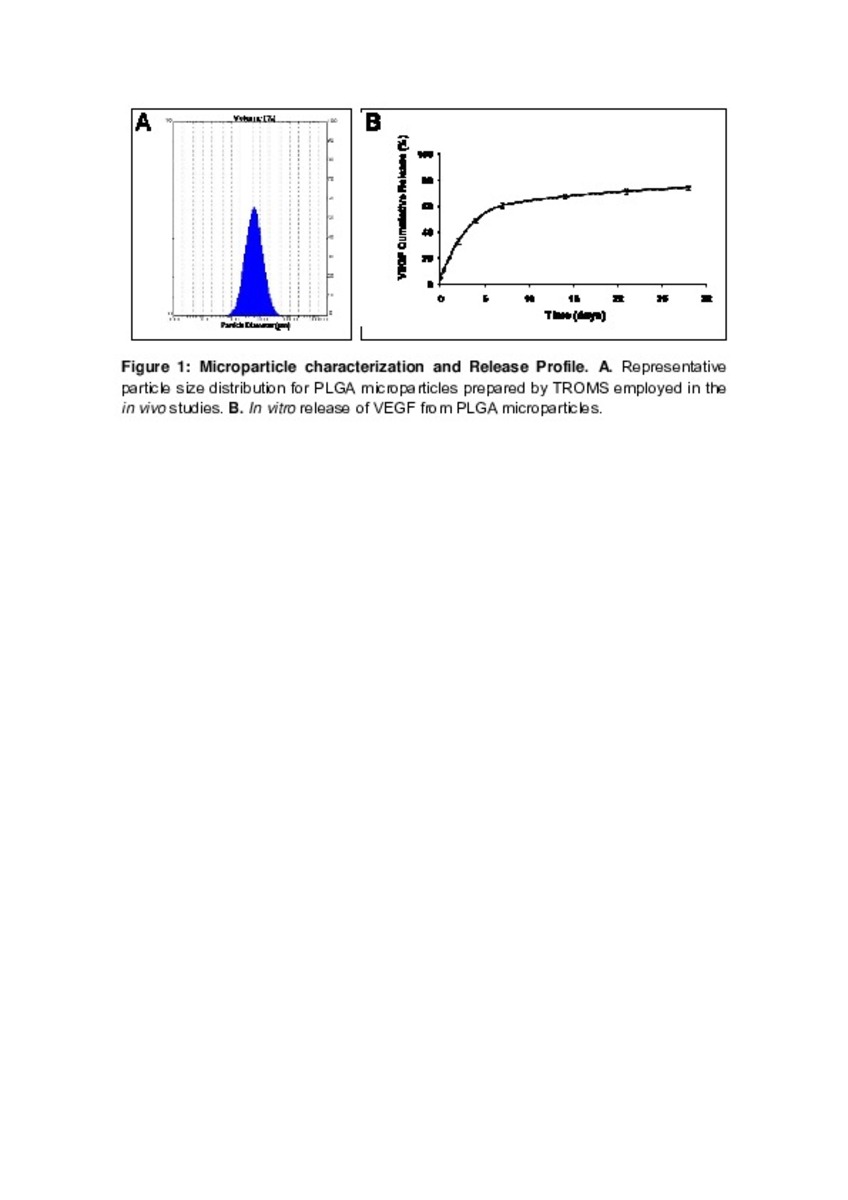Full metadata record
| DC Field | Value | Language |
|---|---|---|
| dc.creator | Formiga, F.R. (Fabio R.) | - |
| dc.creator | Pelacho, B. (Beatriz) | - |
| dc.creator | Garbayo, E | - |
| dc.creator | Abizanda-Sarasa, G. (Gloria) | - |
| dc.creator | Gavira, J.J. (Juan José) | - |
| dc.creator | Simon-Yarza, T. (Teresa) | - |
| dc.creator | Mazo, M. (Manuel) | - |
| dc.creator | Tamayo, E. (Esther) | - |
| dc.creator | Jauquicoa, C. (Carlos) | - |
| dc.creator | Ortiz-de-Solorzano, C. (Carlos) | - |
| dc.creator | Prosper-Cardoso, F. (Felipe) | - |
| dc.creator | Blanco-Prieto, M.J. (María José) | - |
| dc.date.accessioned | 2011-05-31T11:14:07Z | - |
| dc.date.available | 2011-05-31T11:14:07Z | - |
| dc.date.issued | 2010 | - |
| dc.identifier.citation | Formiga FR, Pelacho B, Garbayo E, Abizanda G, et al. Sustained release of VEGF through PLGA microparticles improves vasculogenesis and tissue remodeling in an acute myocardial ischemia–reperfusion model. J Control Release 2010;147(1):30–37 | es_ES |
| dc.identifier.issn | 0168-3659 | - |
| dc.identifier.uri | https://hdl.handle.net/10171/18289 | - |
| dc.description.abstract | The use of pro-angiogenic growth factors in ischemia models has been associated with limited success in the clinical setting, in part owing to the short lived effect of the injected cytokine. The use of a microparticle system could allow localized and sustained cytokine release and consequently a prolonged biological effect with induction of tissue revascularization. To assess the potential of VEGF165 administered as continuous release in ischemic disease, we compared the effect of delivery of poly(lactic–co-glycolic acid) (PLGA) microparticles (MP) loaded with VEGF165 with free-VEGF or control empty microparticles in a rat model of ischemia–reperfusion. VEGF165 loaded microparticles could be detected in the myocardium of the infarcted animals for more than a month after transplant and provided sustained delivery of active protein in vitro and in vivo. One month after treatment, an increase in angiogenesis (small caliber caveolin-1 positive vessels) and arteriogenesis (α-SMA-positive vessels) was observed in animals treated with VEGF microparticles (pb0.05), but not in the empty microparticles or free-VEGF groups. Correlating with this data, a positive remodeling of the heart was also detected in the VEGF-microparticle group with a significantly greater LV wall thickness (pb0.01). In conclusion, PLGA microparticle is a feasible and promising cytokine delivery system for treatment of myocardial ischemia. This strategy could be scaled up and explored in pre-clinical and clinical studies. | es_ES |
| dc.description.sponsorship | http://dx.doi.org/10.1016/j.jconrel.2010.07.097 | - |
| dc.language.iso | eng | es_ES |
| dc.publisher | Elsevier | es_ES |
| dc.relation | info:eu-repo/grantAgreement/EC/FP7/222995 | - |
| dc.rights | info:eu-repo/semantics/openAccess | es_ES |
| dc.subject | Angiogenesis | es_ES |
| dc.subject | VEGF | es_ES |
| dc.subject | PLGA microparticles | es_ES |
| dc.subject | Controlled release | es_ES |
| dc.subject | Myocardial infarction | es_ES |
| dc.title | Sustained release of VEGF through PLGA microparticles improves vasculogenesis and tissue remodeling in an acute myocardial ischemia–reperfusion model | es_ES |
| dc.type | info:eu-repo/semantics/article | es_ES |
Statistics and impact
Items in Dadun are protected by copyright, with all rights reserved, unless otherwise indicated.







